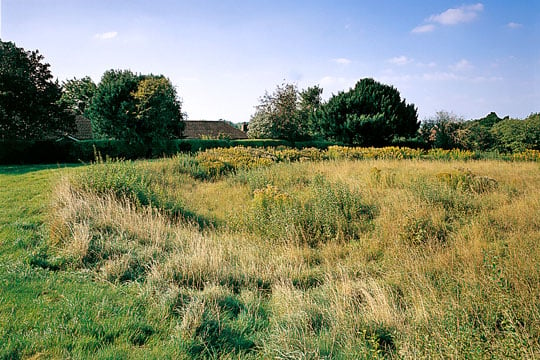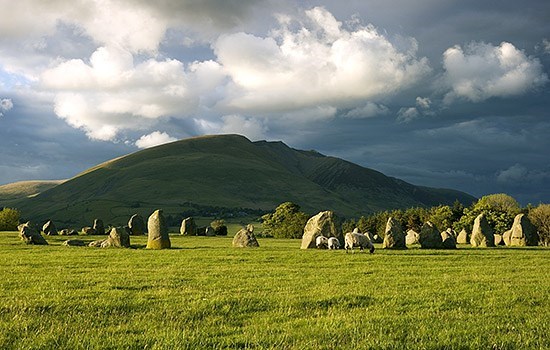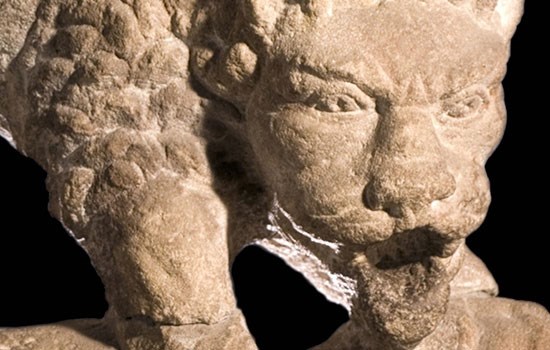History of Flowerdown Barrows
On the edge of the village of Littleton, this tranquil site contains three prehistoric round barrows. These are burial mounds constructed in the early Bronze Age, 4,000 years ago.

The barrows here, originally part of a larger group, stand on a ridge and may have acted as territorial markers. This group is a particularly important prehistoric monument as it survives so well.
A large proportion, almost 75 per cent, of Hampshire barrows have been destroyed or badly damaged by development or ploughing, and only 5 per cent survive intact.
Bowl and Disc Barrows
Round barrows took various forms: the group at Flowerdown includes a disc barrow and two bowl barrows.
Bowl barrows, the most numerous surviving form, consisted of a mound of turf, soil or rock, covering one or more burials, and usually surrounded by a circular ditch from which the mound material may have been quarried.
Funerary ceremonies and rituals may have taken place on the site for some time before the mound was constructed and the burials sealed. The burials were either inhumations, where a crouched body lying on its side was buried in a small pit, or cremations, where ashes, which were often contained in an urn, were placed in the ground.
Grave goods are occasionally found with these burials. Such items included pottery vessels containing food and drink, and weapons, flint tools and pieces of jewellery, to accompany the dead person in the afterlife.
Disc barrows are rare and are particularly likely to have been damaged as they are relatively low earthworks. Many survive only as crop-marks on cultivated land.
A disc barrow was constructed as a circular area of level ground surrounded by a ditch and an external bank, with one or more small low mounds covering burials within the central platform.
These burials, usually cremations, were frequently accompanied by vessels, tools and personal ornaments. The individuals were probably of high status, as excavated examples contain rich grave goods.
Description
The disc barrow lies at the north end of the site. It has a circular, flat platform 28 metres (92 feet) in diameter, on which lie two low circular mounds. The platform is bounded by a wide ditch and an external bank. To the south-west the larger of the two bowl barrows is 20 metres (66 feet) in diameter and 1 metre (3 feet) high, with a central hollow.
The smaller bowl barrow lies close to the outer edge of the disc barrow bank and has a low, roughly circular mound 8 metres (26 feet) in diameter and 0.3 metres (1 foot) high.
Although the barrows may have been disturbed in the past, possibly by 19th century antiquarians who left no record of their excavations, they undoubtedly provide information about the lives of our Bronze Age ancestors.
The barrows contain the Bronze Age land surface, which contains valuable environmental evidence, such as seeds and molluscs, from which the modern archaeologist can build up a picture of the vegetation, climate and farming practices of the past.
Further Reading
Woodward, A, British Barrows: A Matter of Life and Death (Stroud, 2000)
FIND OUT MORE



